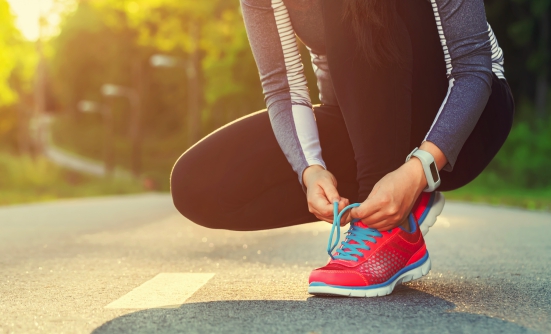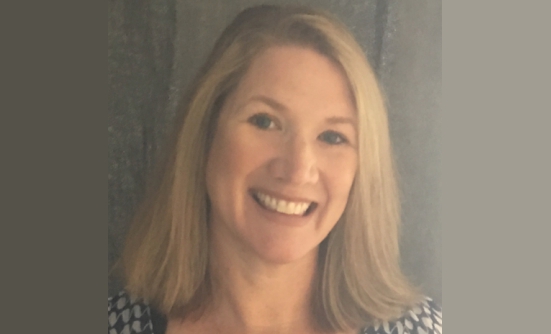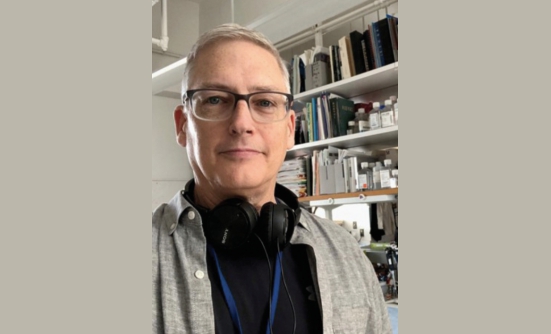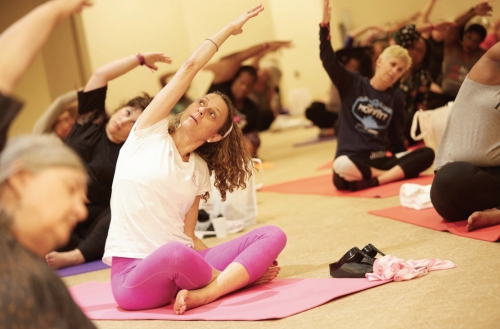
By the time I was diagnosed in June 2015 with triple-negative breast cancer, fitness in its various forms had been in and out of my life since my 20s. To deal with the many weeks of aggressive chemotherapy, my oncologist was very clear: move as much as you can throughout treatment, to combat fatigue and other side effects, and to help reduce cancer-induced anxiety.
Control Through Exercise
I took her words to heart and made fitness a part of my complementary treatment plan. Some days that meant walking with a friend; on other days, I found a gentle yoga class or an oncology exercise session. The benefits were definitive and numerous. I felt physically and emotionally better after each class, I felt I was taking some control back over my life, and it helped me feel more “normal.”
After surgery and radiation, I continued to move whenever I could, working with a physical therapist to reclaim upper body mobility, and to combat cording and tight scar tissue, working my way back to yoga poses and cardio health.
The key was having someone to exercise with. I had 2 friends—one survivor, one in treatment at the same time—who came to walk with me regularly, and while we walked, we talked and provided each other mutual support and advice.
With all the exercise I engaged in during treatment, it was during my transition into survivorship that I recognized the extraordinary importance and impact of regular exercise for patients with cancer and survivors.
As I moved into that murky post-treatment phase, I attended many classes and webinars on a variety of topics, such as chemo brain, the emotional rollercoaster of survivorship, nutrition and healthy living, and emotional well-being. Can you believe that every class and webinar told us to exercise? It amazed me.
The Power of Exercise
In one of the classes, I learned that we normally lose about 3 to 4 pounds of muscle mass over 10 years of aging, but we can lose the same amount of muscle mass in just 6 months of chemotherapy!
Learning this got me to an exercise class on many mornings, not to mention the emotions that kicked in after treatment.
The more I learned, the more I realized how important exercise can be after a cancer diagnosis. Exercise has been shown to change our body’s chemistry and make it a less hospitable environment for cancer to grow.1,2
“Of all lifestyle factors, physical activity has the most robust effect on breast cancer outcomes,”1 according to Ellen Warner, MD, of Sunnybrook Health Science Centre, Toronto, Canada.
Dr. Warner was one of the authors of a study showing that women with breast cancer who exercise regularly have 40% better survival rates.2 And people who have received treatment for colon cancer can reduce their risk for cancer recurrence and improve their odds of survival by as much as half (50%) by engaging in regular exercise.2
Furthermore, exercise combats many treatment-related side effects, including bone density loss, balance issues, loss of muscle mass, flexibility and mobility issues, and lymphedema. It helps to reduce emotional side effects, such as anxiety and depression, so prevalent among cancer survivors.
Did you know that exercise is considered the number one treatment, alone or in combination with psychological support?3,4 This is based on an analysis of 113 studies showing that exercise (and psychological interventions, alone or together) reduces cancer-related fatigue during and after cancer.4
Exercise is safe for most patients with cancer and survivors, and is critically important to our quality of life.
According to exercise physiologist Prue Cormie, PhD, MSc, AEP, Associate Professor and Principal Research Fellow at Peter MacCallum Cancer Centre in Victoria, Australia, “If exercise could be encapsulated in a pill, it would be prescribed to every cancer patient worldwide.”5
Perseverance: Make Fitness a Priority
The American Cancer Society recommends 150 minutes per week of moderate to vigorous exercise, including at least 2 days a week of resistance or strength training. Patients in active treatment can reduce this to 75 minutes of physical activity per week.6
However, this doesn’t mean going to a gym for an hour. There are many ways to get exercise, and walking is a great start! You can also exercise in small increments, it all adds up, and it all counts.
The more I learned, the more I was determined to make fitness a priority in my life. And I did, with a lot of persistence and patience. Shortly after my treatment ended, I was doing barre classes (low-impact resistance exercises) with no weights in my hands, just the weight of my arm was all I could lift.
In time, however, I was able to hold 2 pounds, then 3 pounds, then 5, and I built it up slowly. It takes time to rebuild strength, endurance, and flexibility. My mantra is, “Be patient with your body.”
Over time, I’ve found the exercise regimen that works for me. My personal regimen includes hot power yoga, barre, strength training classes, brisk walking, and occasional running. I’ve also tried belly dancing, cardio drumming, and qigong. And I don’t regret any time I dragged myself out of the house to exercise. It has helped me tremendously, from fighting fatigue and chemo brain to building back muscle and confidence.
Why We Don’t Exercise
Yet, despite all the benefits, most people don’t get the exercise they need. In fact, according to a recent study, up to 70% of breast cancer survivors don’t meet the recommended exercise guidelines.7 Why? Because it’s hard! There are logistic, psychological, and environmental barriers. To get moving and stay active, we all need a healthy dose of motivation, accountability, and support.
Based on my personal experience, and after reviewing much research, I know that having someone to walk with, or just to encourage us to get moving, makes all the difference. The combination of social support and exercise is incredibly powerful. And it works both ways.
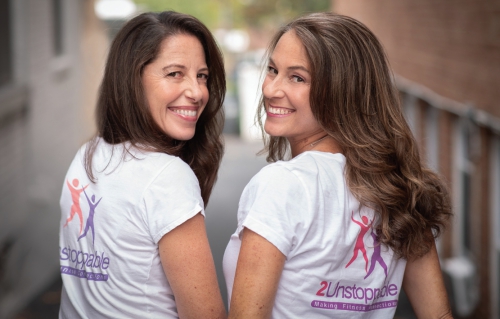
Making Connections
In her book The Joy of Movement, Kelly McGonigal, PhD, identifies an important element of movement, in addition to the physical and emotional. It primes us to connect with others. “So much of the joy of movement is actually the joy of connection,” Dr. McGonigal wrote.
Walking with someone, we’re more likely to open up. Coming back from a run, we are more likely to engage with our loved ones at home. The parking lot conversations after oncology exercise classes are not a coincidence. As Dr. McGonigal wrote in her book, “How marvelous it is that by exercising or volunteering in packs, we can forge friendships that nourish us.”
2Unstoppable
In 2017, cancer survivor Ilana Gamerman and I co-founded an organization called 2Unstoppable (www.2unstoppable.org), to inspire and support exercise among women with cancer. 2Unstoppable harnesses the powerful combination of social connection and oncology exercise to ensure that every woman with cancer can access the tools and support she needs to get moving and improve her outcome.
We have many carefully curated virtual exercise classes, both drop-in and progressive, 21-day fitness challenges, an online fitness buddy matching program, a monthly newsletter, resources, blogs, and a broad community of women looking to stay active after cancer.
2Unstoppable is a leading provider of woman-centric oncology exercise programs, delivered virtually and combined with social support. Join our community and see how you can improve your outcome through exercise!
References
- Breastcancer.org. Study suggests exercise, maintaining healthy weight most important lifestyle factors for reducing recurrence risk. Updated February 22, 2022. www.breastcancer.org/research-news/most-important-factors-to-reduce-recurrence-risk.
- Hamer J, Warner E. Lifestyle modifications for patients with breast cancer to improve prognosis and optimize overall health. Canadian Medical Association Journal. 2017;189(7):E268-E274. www.cmaj.ca/content/189/7/E268.long.
- Whiteman H. Cancer-related fatigue: exercise, psychological therapies best treatments. March 3, 2017. Medical News Today. www.medicalnewstoday.com/articles/316168.
- Mustian KM, Alfano CM, Heckler C, et al. Comparison of pharmaceutical, psychological, and exercise treatments for cancer-related fatigue: a meta-analysis. JAMA Oncology. 2017;3(7):961-968. https://jamanetwork.com/journals/jamaoncology/fullarticle/2606439.
- Cormie P. Every cancer patient should be prescribed exercise medicine. The Conversation. May 6, 2018. https://theconversation.com/every-cancer-patient-should-be-prescribed-exercise-medicine-95440.
- American Cancer Society. ACS guideline for diet and physical activity. Updated June 9, 2020. www.cancer.org/healthy/eat-healthy-get-active/acs-guidelines-nutrition-physical-activity-cancer-prevention/guidelines.html.
- Caperchione CM, Sabiston CM, Stolp S, et al. A preliminary trial examining a ‘real world’ approach for increasing physical activity among breast cancer survivors: findings from project MOVE. BMC Cancer. 2019;19(1):272. https://doi.org/10.1186/s12885-019-5470-2.
Patient Resources
American Cancer Society
www.cancer.org/cancer/breast-cancer/treatment/surgery-for-breast-cancer/exercises-after-breast-cancer-surgery.html
National Center for Complementary and Integrative Health
www.nccih.nih.gov/health/qigong-what-you-need-to-know
2Unstoppable
www.2unstoppable.org










